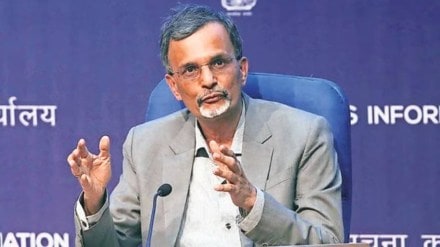Chief economic advisor V Anantha Nageswaran on Friday reaffirmed the forecast of 6.3–6.8% economic growth for the current financial year, expressing confidence that domestic reforms — including proposed GST rate cuts — will boost demand and offset the adverse impact of the 50% tariff on Indian goods.
He acknowledged that manufacturing could face some pressure in the July–September quarter, but said it was difficult to make a precise estimate as exporters work to expand into newer markets.
“Recent policy steps — Task Force for Next-Gen Reforms, forthcoming GST changes, State deregulation & easing interest rates — are expected to reduce borrowing costs, attract capital and boost consumption and investment. No revision is proposed to the growth forecast of 6.3% – 6.8% as of now,” Nageswaran said.
However, he cautioned that near-term risks to economic activity remain, particularly in exports and capital formation, due to tariff-related uncertainties.
India’s GDP records 7.8% surge in Q1FY26
India’s GDP grew 7.8% in Q1FY26, nearly 100 basis points above consensus estimates. The manufacturing and services sectors were key drivers, expanding 7.7% and 9.3% respectively.
High-frequency indicators for July 2025 indicate a carry-forward of Q1 economic momentum, Nageswaran said.
“Domestic demand is expected to strengthen in the upcoming quarters with the onset of the festive period and forthcoming GST rate changes,” he said. The GST Council is scheduled to meet on September 3–4 to consider the Centre’s proposal to cut tax rates on a wide range of essentials and consumer durables, in time for the festive season.
Beginning Wednesday, the US government imposed a 50% tariff on most Indian exports to America, making them less competitive compared to goods from several Asia-Pacific countries, which face only 15–20% tariffs.
High US tariffs are likely to be for a brief period
Nageswaran said that high tariffs are expected to be “short-lived” as both US and India are in talks for removal of the 25% penal tariff.
The Economic Survey tabled in parliament in January had projected real economic growth at 6.3-6.8% for FY26.
“After seeing the resilience of the growth in the first quarter and the data for the July numbers, we are maintaining our growth range for the full year,” he said, responding to a question on whether domestic markets will be able to offset US tariffs.
“Will the consumption growth or the higher-than-expected GDP growth offset the tariff-related negative effects? The answer is ‘yes’, which is why we said that we are not downgrading our growth estimate for the year (2025-26). We have kept the range at 6.3-6.8%. That gives you enough indication that despite the reciprocal tariff and the penal tariff having been imposed,” he said.
